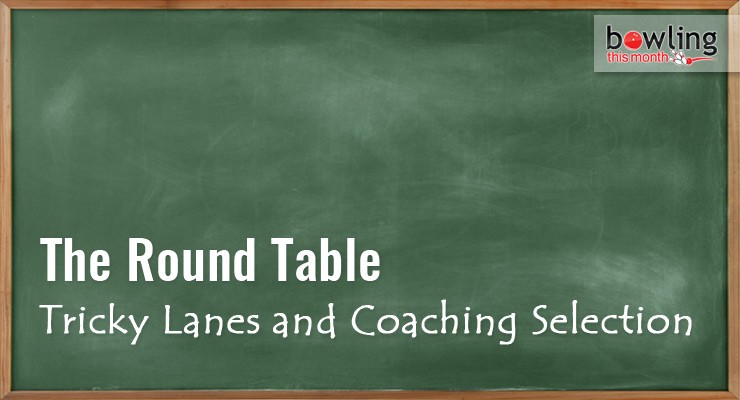Happy New Year and welcome back to the Round Table! Thanks to the readers who sent in the questions for this Round Table discussion. This month’s panel of experts is loaded with years of coaching experience as well as competing successfully at the highest levels of our sport. The first question deals with strategies associated with handling a tricky lane condition and the second question explores different approaches to getting coaching and instruction.
Editor’s note: The format of The Round Table column consists of posing technical questions submitted by readers to several top bowling coaches and educators and having them respond in “round-robin” style.
When lanes are not broken down properly or on long and difficult sport shots, the heads will hook while the back ends tend be tighter. What are some effective strategies for dealing with this type of condition or pattern breakdown?
Steve Kloempken
This is a terrific question as it correctly identifies what happens from a ball reaction standpoint. Several tournaments and league sessions start with a freshly oiled and clean lane surface. As the games go by and the day goes on, the balls pick up a lot of oil in the heads and midlane and, especially if they are a low flaring design like that predominantly used in bowlers’ spare balls, redistribute some of that oil to the back ends.
It should be noted that if all bowlers are using high-end reactive equipment which flares, then those particular balls will only carry the oil down in a “dots and dashes” pattern. This is the oil from just the top and bottom bow tie area of the ball since that repeatedly touches the lane from foul line to pin deck. I have to give credit for the phrase “dots and dashes” to John Forst who has a wealth of experience as a lane maintenance expert.
Documented studies have shown that a huge amount of conditioner is removed from the body of the oil pattern by the bowling ball. Aggressive coverstocks respond greatly to even small changes in the condition, so bowlers are forced to move their feet inside quicker than ever. Additionally, the moves are also larger. As this happens, the bowler has to create more back end reaction because the angle is now more open through the heads.
A bowler’s first instinct in this situation is often to try to make their ball hook more on the back end by grabbing the ball and really revving it up. This approach, however, seldom works.
What happens is that the added grip pressure almost always causes the ball to react too soon. It never glides cleanly to the breakpoint. If it does happen to hit the pocket, ...
This article is only available to Bowling This Month subscribers. Click below to get instant access to this article and all of our other premium instructional content.
Subscribe to Bowling This Month
Already a Bowling This Month subscriber? Click here to log in.
Image Credits: Chalkboard illustration (©iStock.com/Rawpixel) is licensed for use by BTM and is the copyrighted property of its original creator.
